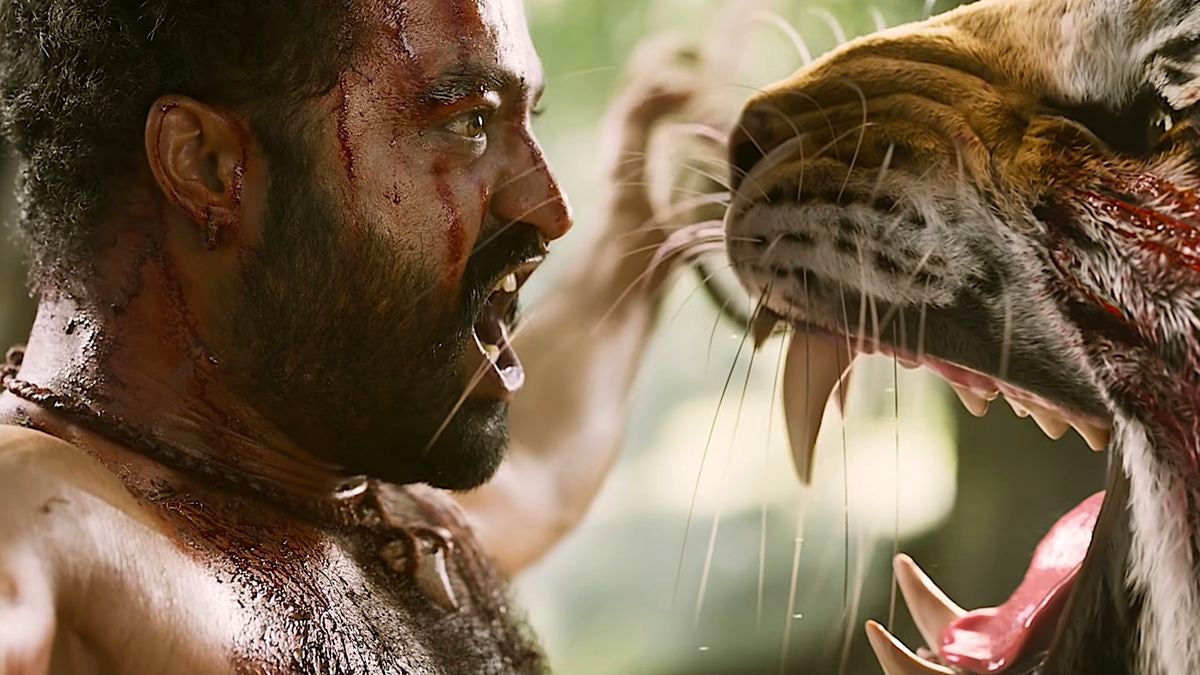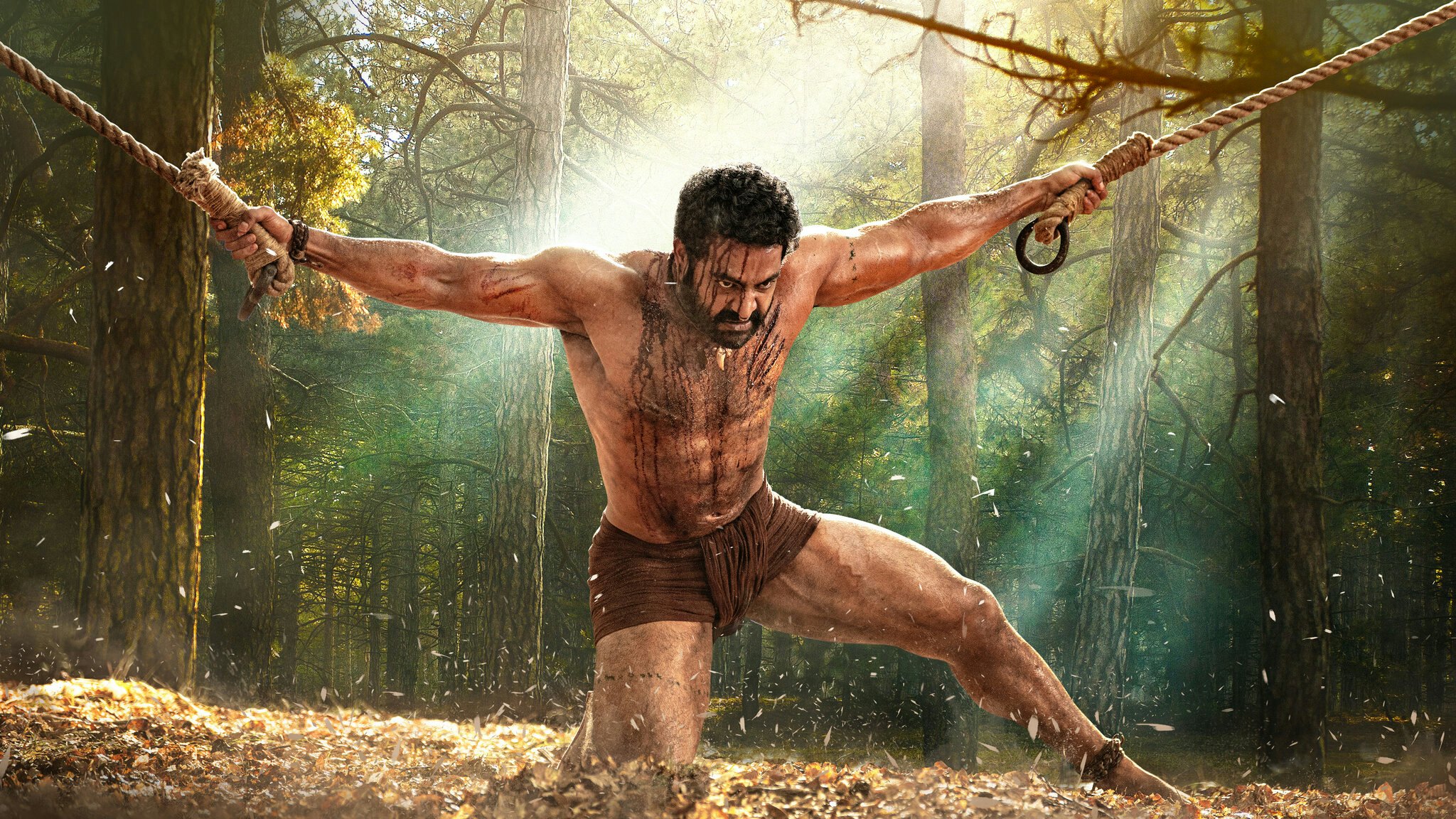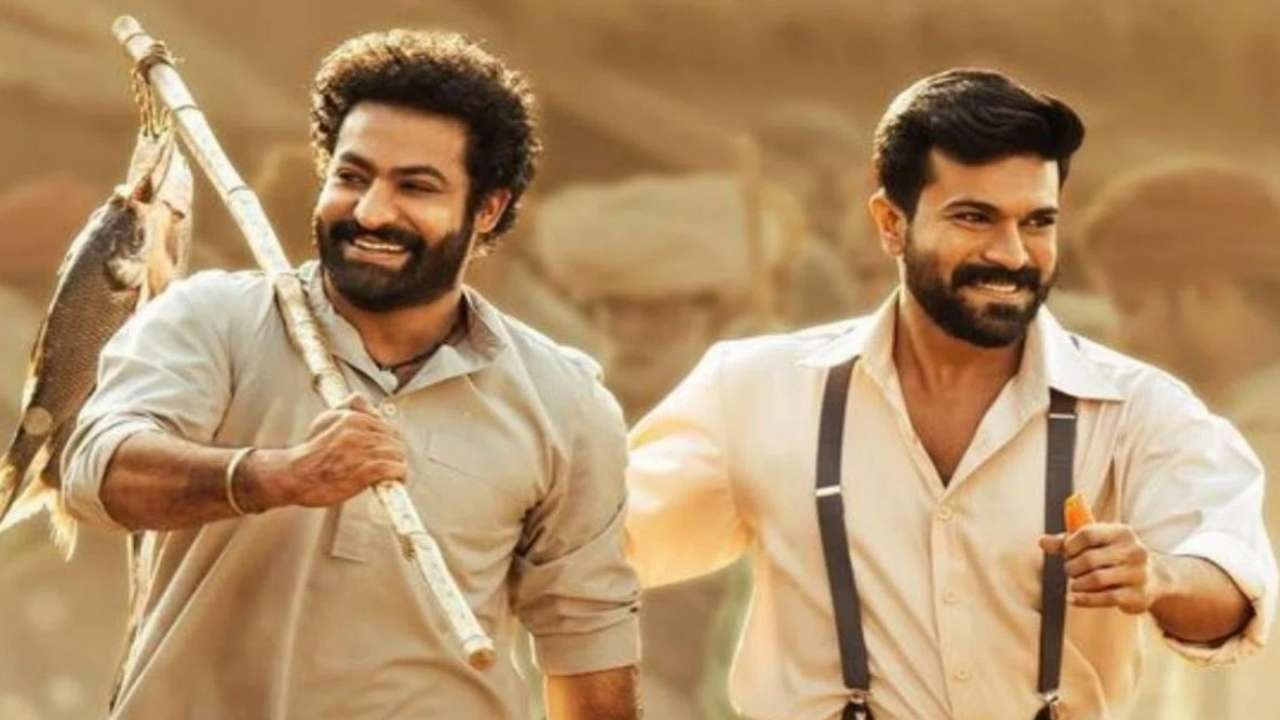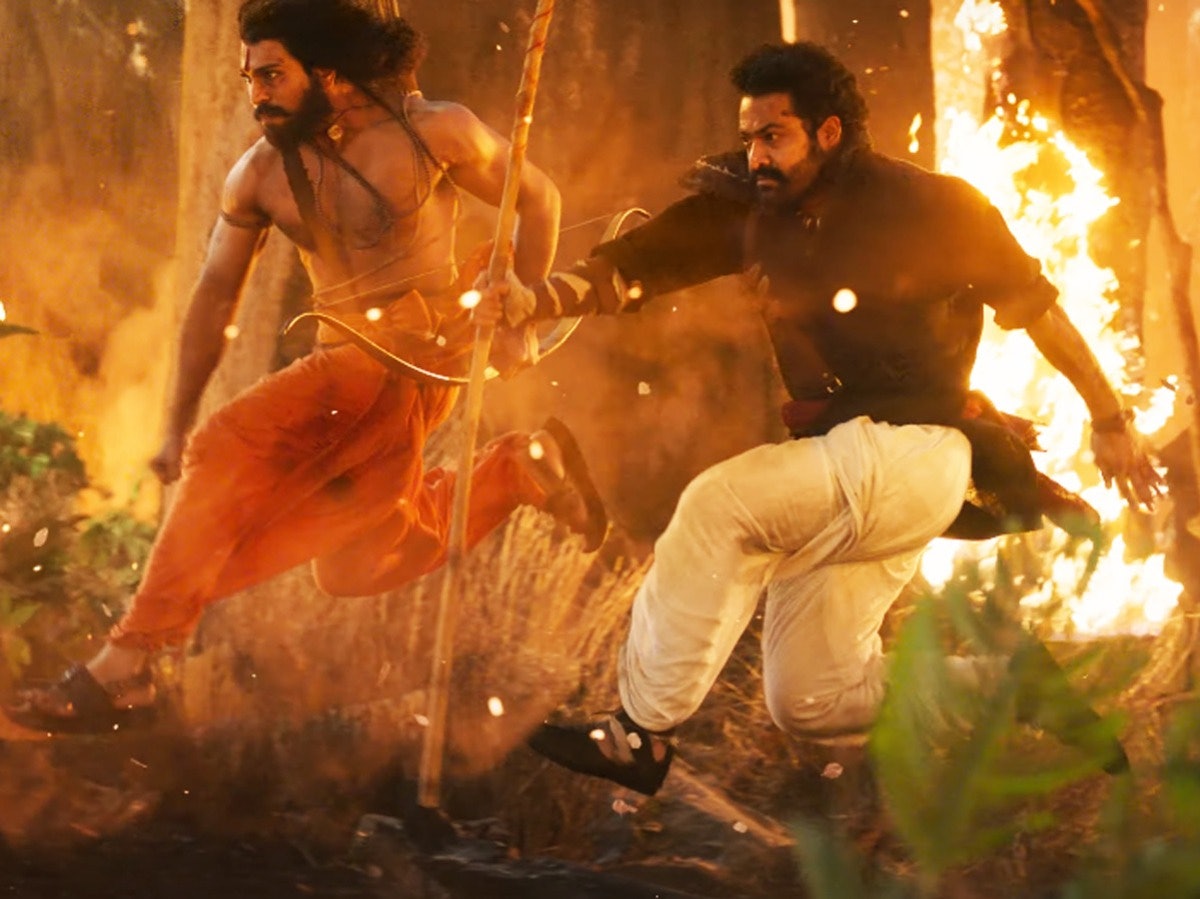
“Outmanned but not outmatched” holds top honors as one of action cinema’s classic fight scene setups. The protagonist throws down with a gaggle of goons, makes them look very silly in short order and high style, then goes about the rest of their day as easy as you please. The thing about goons is that they only seem intimidating when they’re massed together, the way a rack of bowling pins only seems daunting from the other end of the lane. Knocking them down just takes a tough guy on a mission.
RRR, the lauded Tollywood epic from Indian filmmaker S. S. Rajamouli that’s finally available to stream on Netflix, enjoys this setup with one major tweak. Rajamouli’s undaunted Indian leading men, who are best thought of as superheroes without the superpowers, go toe-to-toe with a flamboyance of Englishmen at a posh garden party where the only other people of color in attendance are the help. Odds favor the English, but when the dust settles, they’re all prone in the dirt, clutching sprained ankles, shins, and knees; the dashing Indian hunks stand victorious.
Not one blow is struck in this scene. Instead of staging a brawl, Rajamouli orchestrates a fierce and exuberant show-stopper of a dance number, “Naatu Naatu,” where his dual protagonists, Bheem (N.T. Rama Rao Jr.) and Raju (Ram Charan), cut the finest of rugs and leave their bewildered British on their pasty butts. Then, just for the hell of it, they have a dance-off with each other in the spirit of fellowship.
As in any fight sequence, the satisfaction of seeing the bad guys laid out by the good guys is the reward, especially given that RRR’s big bad guy is the British Raj. Plenty of colonialists receive more traditional whuppings throughout RRR’s formidable three-hour running time. But don’t let the length put you off, this is the breeziest blockbuster you’ll watch all year.
RRR is set in 1920 and hinges on child kidnapping: The odious British Governor Scott Buxton (Ray Stevenson) and his wife Catherine (Alison Doody) visit a forest village and, on Catherine’s whim, snatch young Malli (Twinkle Sharma) because of her celestial singing voice and exquisite talent for henna body art. Her abduction has a swift domino effect. First, it draws the attention and righteous ire of Bheem, a ferocious guardian of the Gond tribe charged with protecting his people at any cost. No obstacle too great, no enemy too strong; mess with his kindred and he’ll set a tiger loose in your house.

Bheem’s promised retribution against the Buxtons, and all of Britain while he’s at it, catches the ear of Raju, a cop on the Brits’ payroll. He’s the only officer capable of taking Bheem down. He adopts an alias and hits the streets of Delhi to pick up Bheem’s trail, who likewise assumes a fake identity while searching for Malli. In a heartwarming stroke of irony, when Bheem meets Raju they forego introductions to save a boy from a flaming trainwreck, and, of course, the pair become bros immediately. But can they stay bros when they’re hiding profound secrets from each other? Will they stay bros?
Think of RRR as the exception to the rule that all fanfiction is schlock. Bheem and Raju are real historical figures, revolutionaries from different states who never actually met. Rajamouli repurposes them as action heroes in the mold of Jackie Chan, affable superhumans capable of feats that even gods might have a hard time matching. Working together to save the boy from a fiery demise, they each tie one end of a sturdy rope around their waists, leap in from opposite sides of a bridge in perfect synch, meet in the middle, and grab the boy by the hand. Bheem tosses him to Raju, who drops him into water far away from the conflagration, the men meet in the middle once more and clasp hands, and Rajamouli smash cuts the film’s title card, 40 minutes in.

Action movies typically save their best for last. But the train rescue sequence is a mere taste of what the picture has in store for viewers, and it’s still better than climactic scenes from most American blockbusters. Rajamouli, his cast, and his crew have seemingly agreed on making not simply the best movie possible, but the most movie possible: The most joyful, the most jaw-dropping, the most exciting, the most animating, and the most moving movie they can muster.
Bheem and Raju aren’t introduced to Rajamouli’s audience. They’re impressed upon us. Raju first appears fighting a whole mob of protestors swarming an English prison just to apprehend one rioter and put him behind bars; the scene comes right out of the Zack Snyder slo-mo playbook. Elsewhere, Bheem vaults through hill and dale doused in animal blood to attract jungle predators as part of his multi-tiered scheme to save Malli. It’s an excessive, overcomplicated plot that verges on ludicrous, but it works.

Big moments like these burst with pomp befitting of Tollywood style, the stature of the characters, and the fame of the movie’s leads, who in their home states are practically beatified. Even small character beats express a certain grandeur, especially those abetted by Rama Rao Jr. and Charan’s irrepressible charisma. Gravity-defying action deserves a healthy dose of sublimity; platonic, wholesome love between two guys deserves the same sentiment.
It’s the sentiment that carries RRR to operatic peaks and, in the end, ecstatic triumph. The film is breathtaking and brazenly over the top, from its songs to its smackdowns; the pleasure we experience watching smug and brutal racists get their comeuppance by hyper-competent champions of the oppressed class is matched by the pleasure we get from the way Rajamouli treats culture and heritage as weapons against racism. But RRR doesn’t over-articulate the message, instead folding it into pure spectacle worthy of celebration. There’s truly nothing else like it.
RRR is streaming on Netflix.







